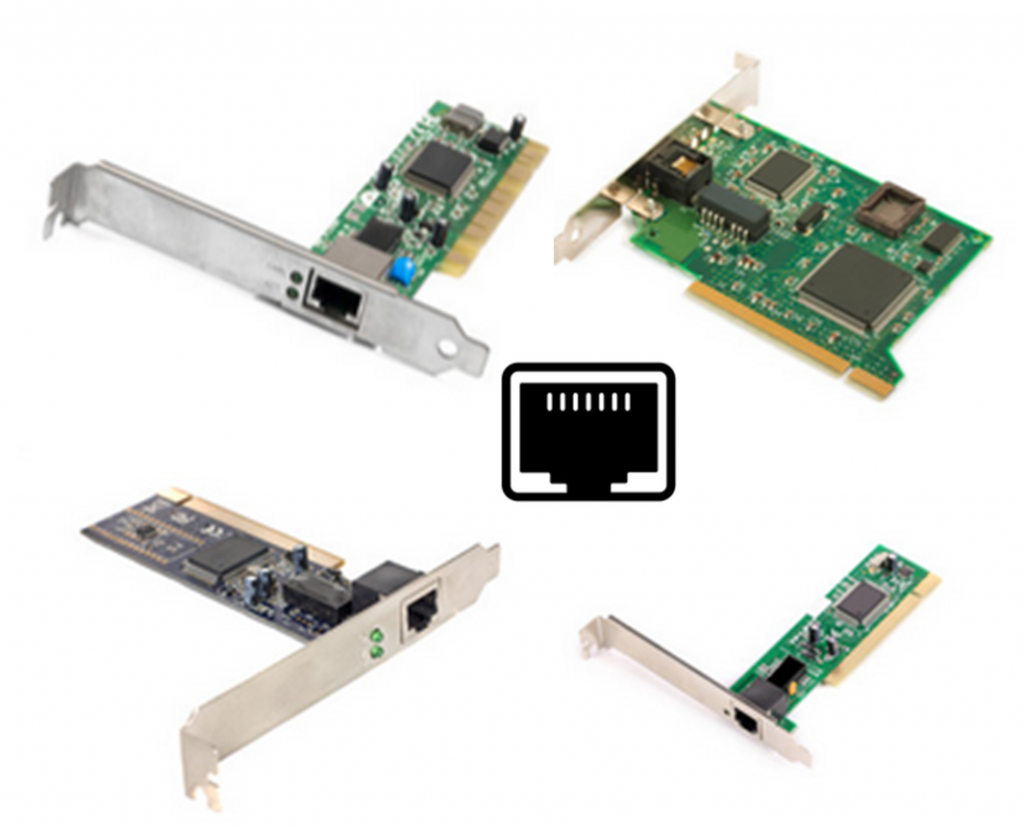Different Ethernet Standards
The most widely used technology in networking is Ethernet. As we said in the early lesson, Ethernet works both in the data link and physical layers. Ethernet standards define both the Layer 2 protocols and the Layer 1 technologies. For the Layer 2 protocols, as with all 802 IEEE standards, Ethernet relies on the two separate sublayers of the data link layer to operate: the Logical Link Control (LLC) and the MAC sublayers.
Other LAN types include Token Ring, Fast Ethernet, Gigabit Ethernet, 10 Gigabit Ethernet, Fiber Distributed Data Interface (FDDI), Asynchronous Transfer Mode (ATM) and Local Talk. Different Ethernet standards support different bands of data:-
Ethernet standards
Ethernet is the most popular physical layer LAN technology nowadays. A standard Ethernet network can broadcast data at up to 10 Mbps. Ethernet is popular as it strikes a good balance between speed, cost and ease of installation.
The Institute for Electrical and Electronic Engineers developed an Ethernet standard, IEEE Standard 802.3. This standard also defines rules for configuring an Ethernet network and how the elements interact with each other. By adhering to the IEEE standard, network equipment and protocols can communicate efficiently.
Fast Ethernet
The Fast Ethernet standard has been established for networks that need higher transmission speeds. The standard defines for fast Ethernet is IEEE 802.3u. This standard extends the Ethernet speed limit from 10 Mbps to 100 Mbps with little changes to the existing structure. It also provides better video, multimedia, graphics, Internet surfing results, and stronger error detection and correction. Fast Ethernet has three types:-
- 100BASE-TX using Cat-5 and Cat-6 UTP Cable.
- 100BASE-FX using Fiber Optic Cable.
- 100BASE-T4 using Cat-3 UTP Cable.
Gigabit Ethernet
Gigabit Ethernet is more for faster than Fast Ethernet networks with applications such as multimedia and VoIP. The Gigabit Ethernet speed is 10 times faster than Fast Ethernet. The Gigabit Ethernet is defined in the IEEE 802.3 standard as a backbone. Ethernet and Fast Ethernet can feed into a Gigabit Ethernet to interconnect high-performance switches, routers, and servers.
10 Gigabit Ethernet
This is the fastest and most recent Ethernet standard. IEEE 802.3ae defines a version of Ethernet with a nominal rate of 10 Gbits/s. 10 Gigabit Ethernet is 10 times faster than Gigabit Ethernet. The difference with other Ethernet is that it is based entirely on optical fibre connections.
Asynchronous Transfer Mode (ATM)
ATM is the abbreviation for Asynchronous Transfer Mode. It is a cell-based fast-packet communication technique that supports data-transfer rates from sub-T1 speeds to 10 Gbps. It can be integrated into an existing network as needed without any further updates. The technology was basically for the high-speed transmission of all forms of media, from basic graphics to full-motion video.
Due to the small size of cells, ATM equipment can transmit large amounts of data over a single connection. It also allows ISPs to assign limited bandwidth to each customer. While this may seem like a downside for the customer, it improves the efficiency of the ISP’s Internet connection, causing the overall speed of the connection to be faster for everybody.
Power over Ethernet (PoE)
Power over Ethernet (PoE) is a solution in which an electrical current is run to networking hardware over the Ethernet Category 5 or 6 cable. This minimizes the amount of cable needed and eliminates the difficulties and cost of installing extra outlets for input AC or DC power to the equipment.

